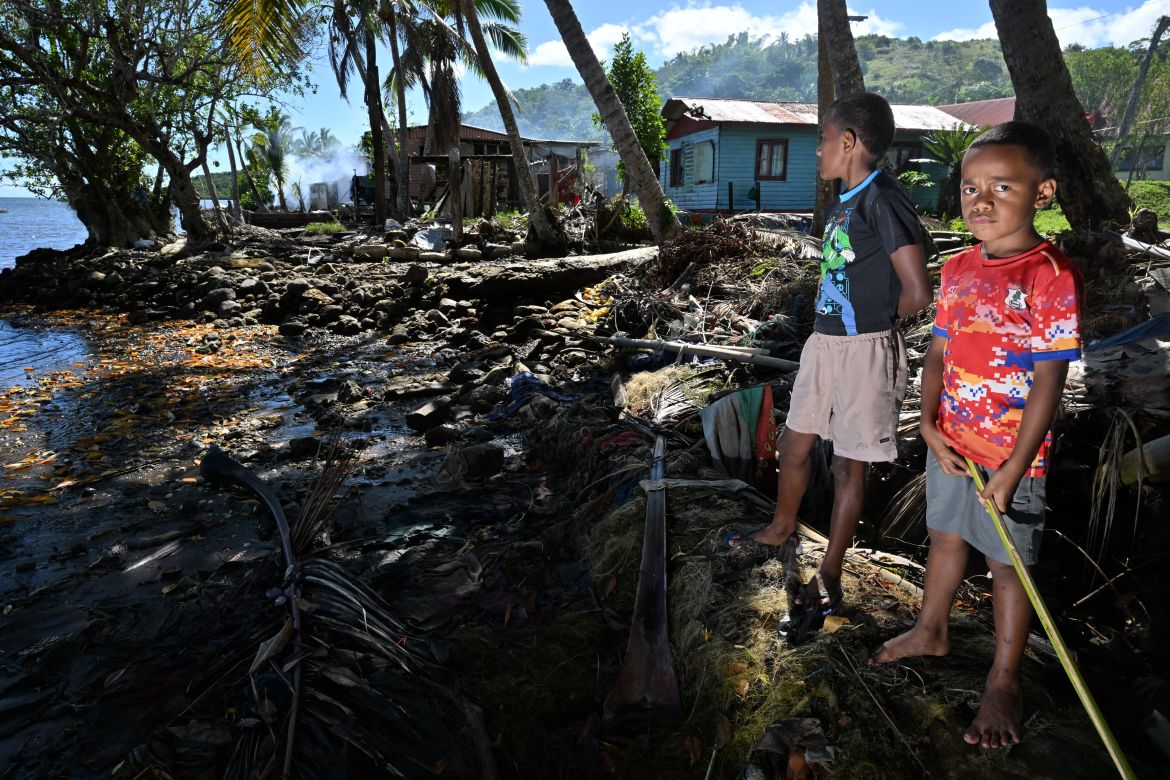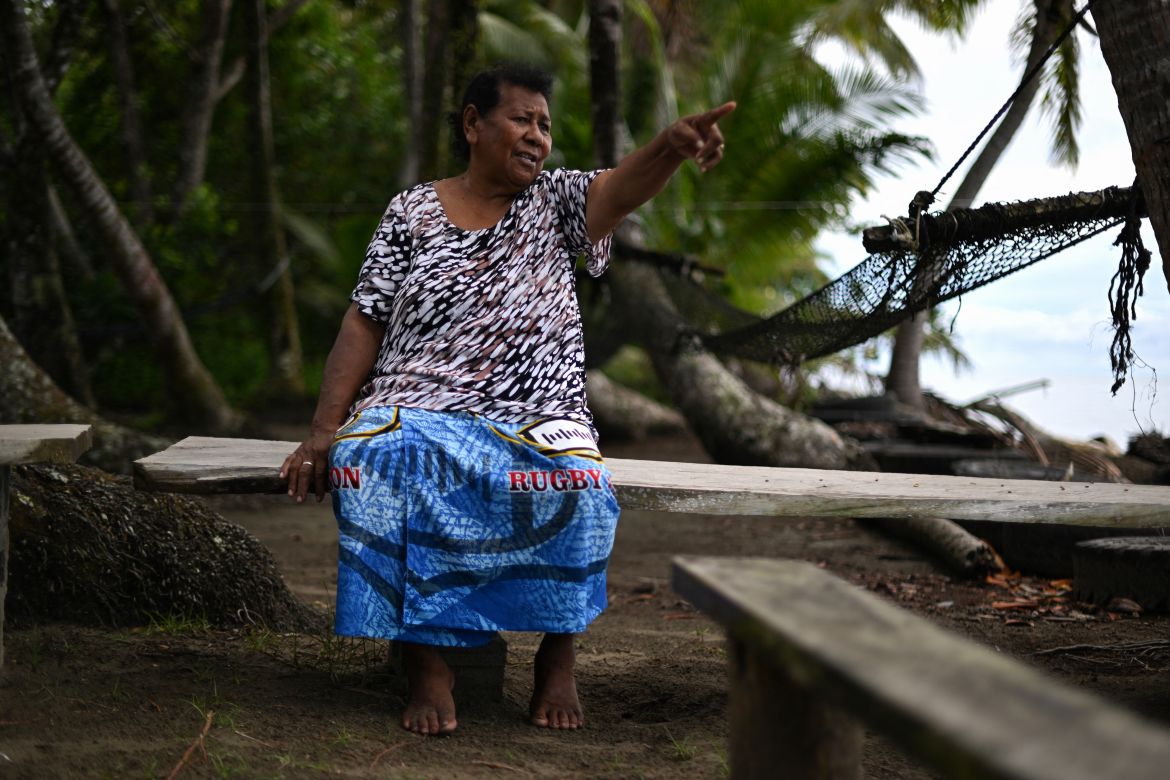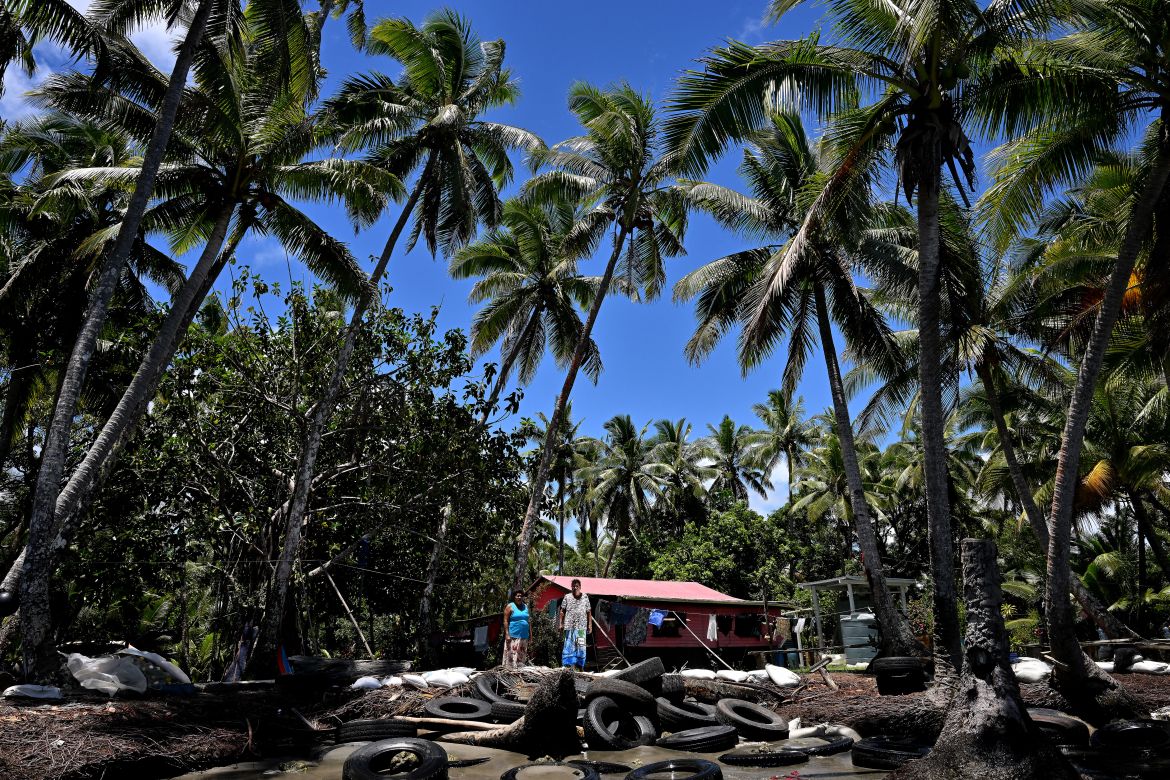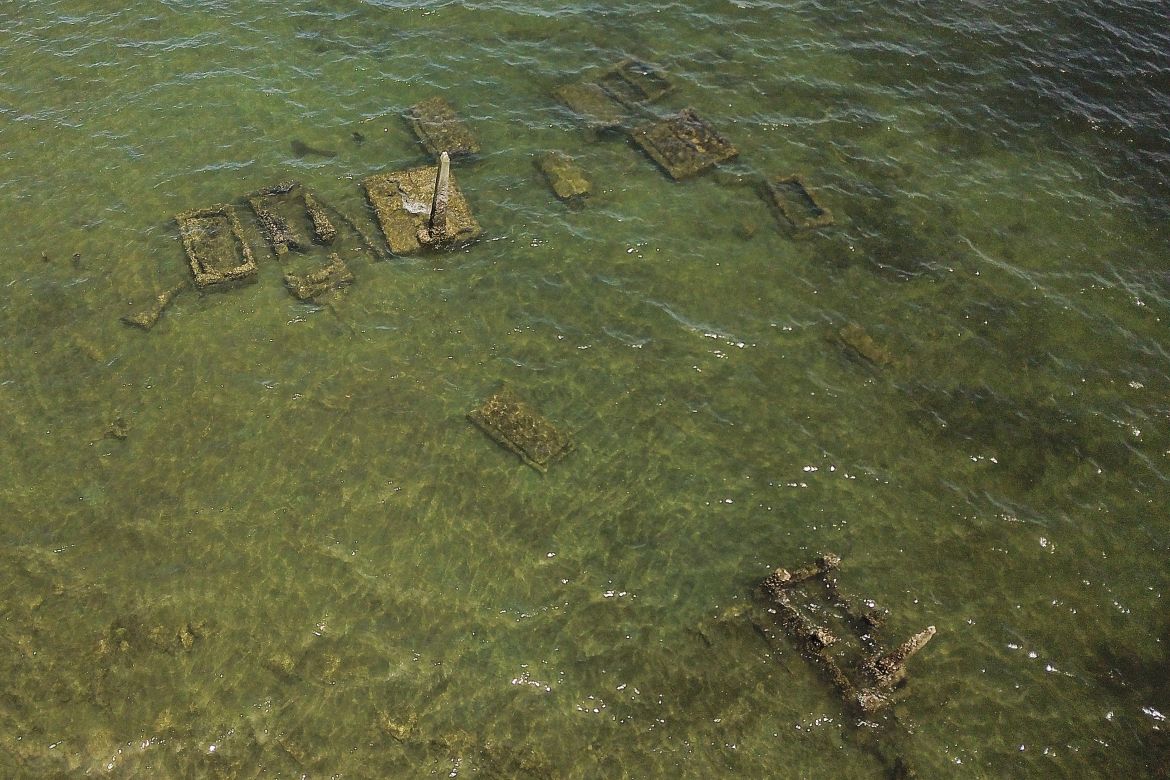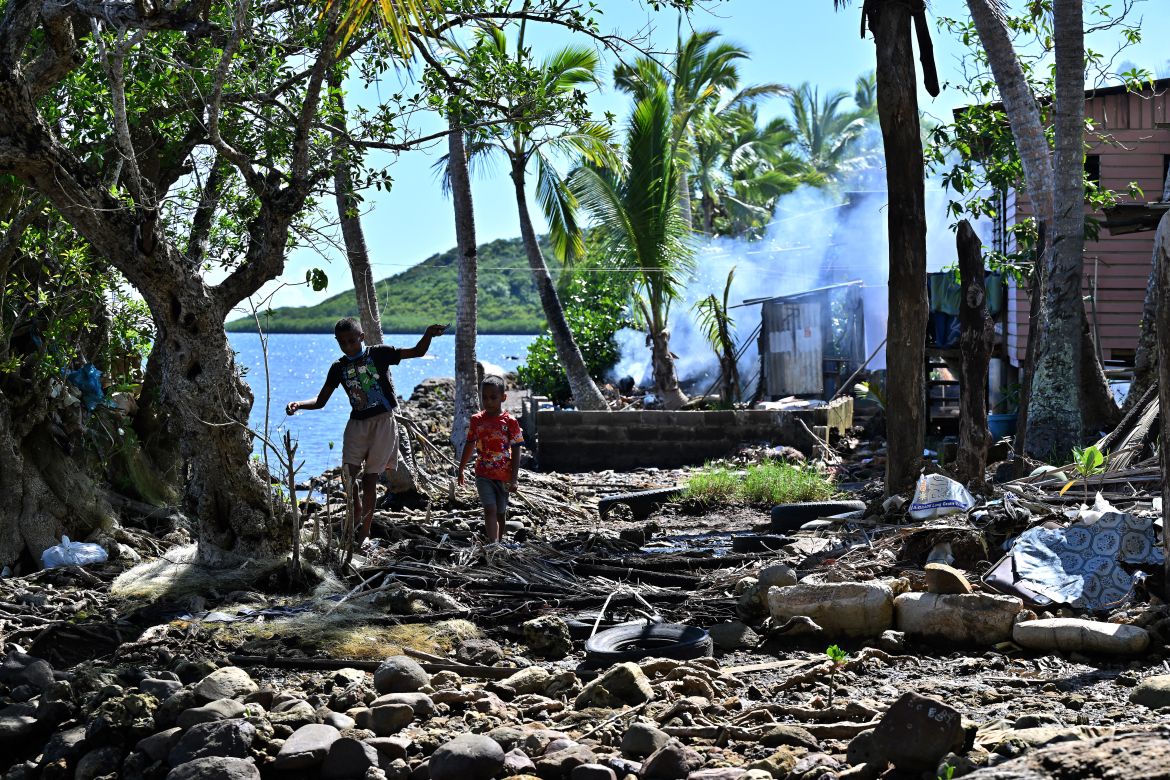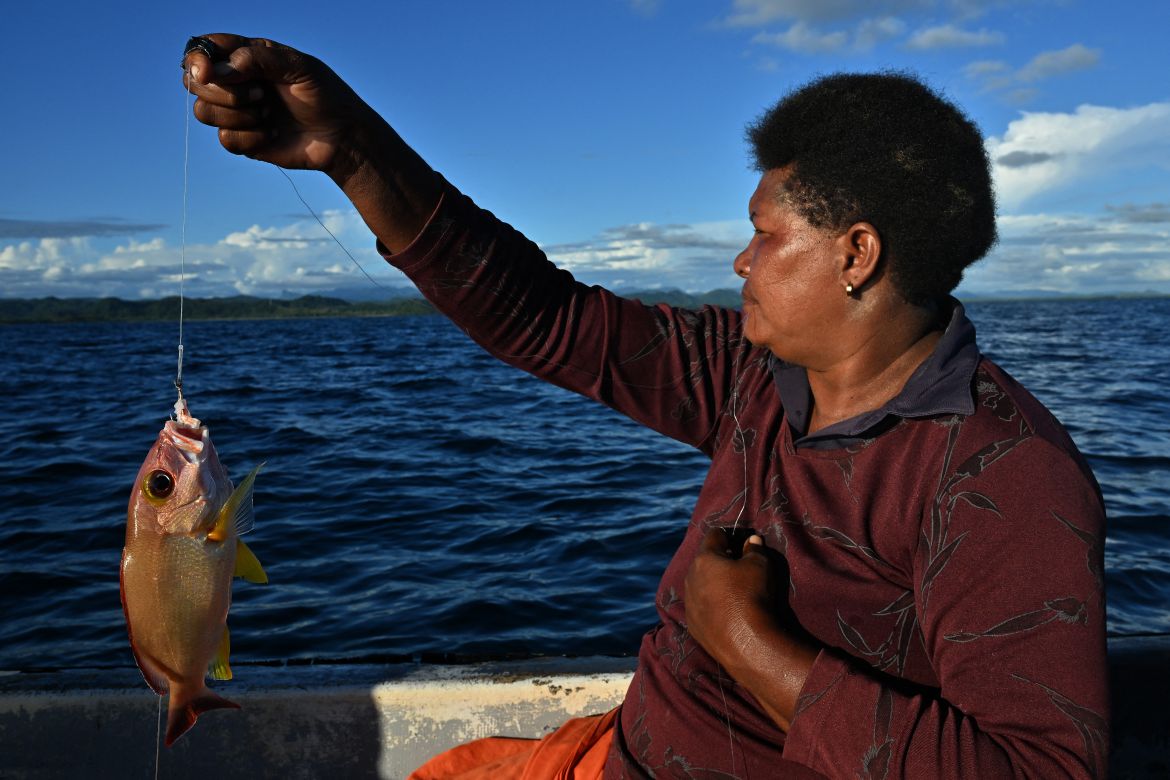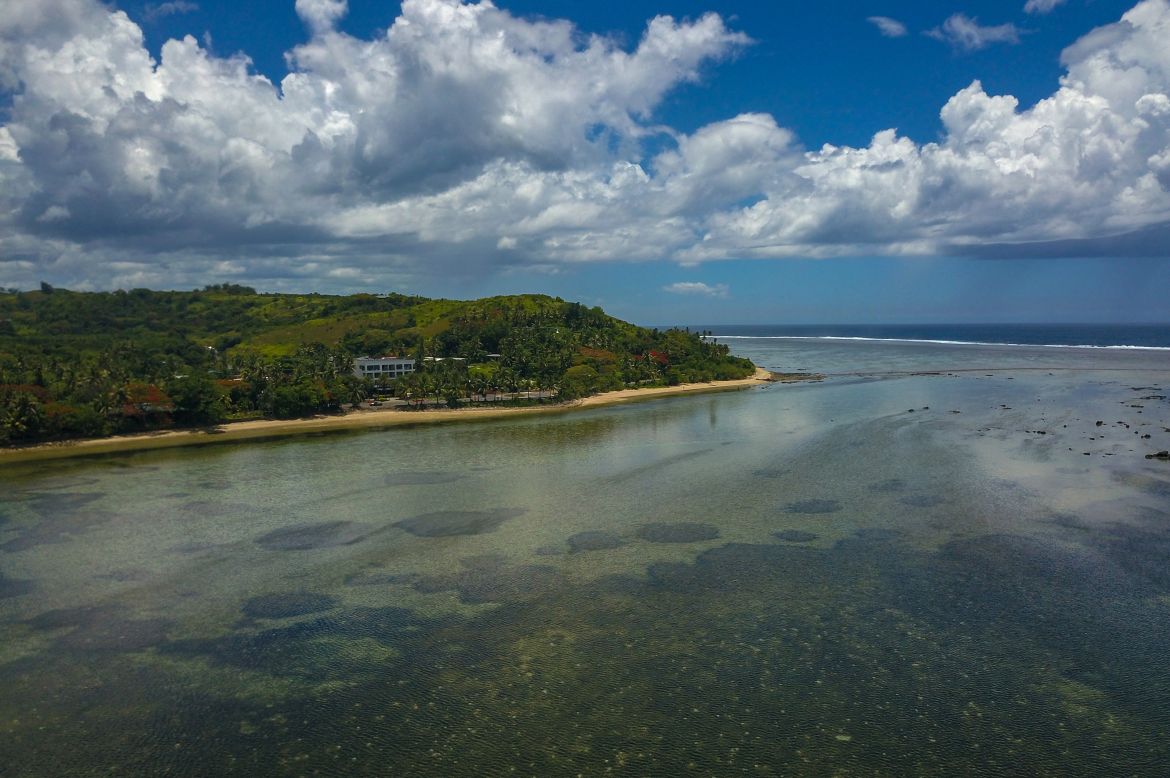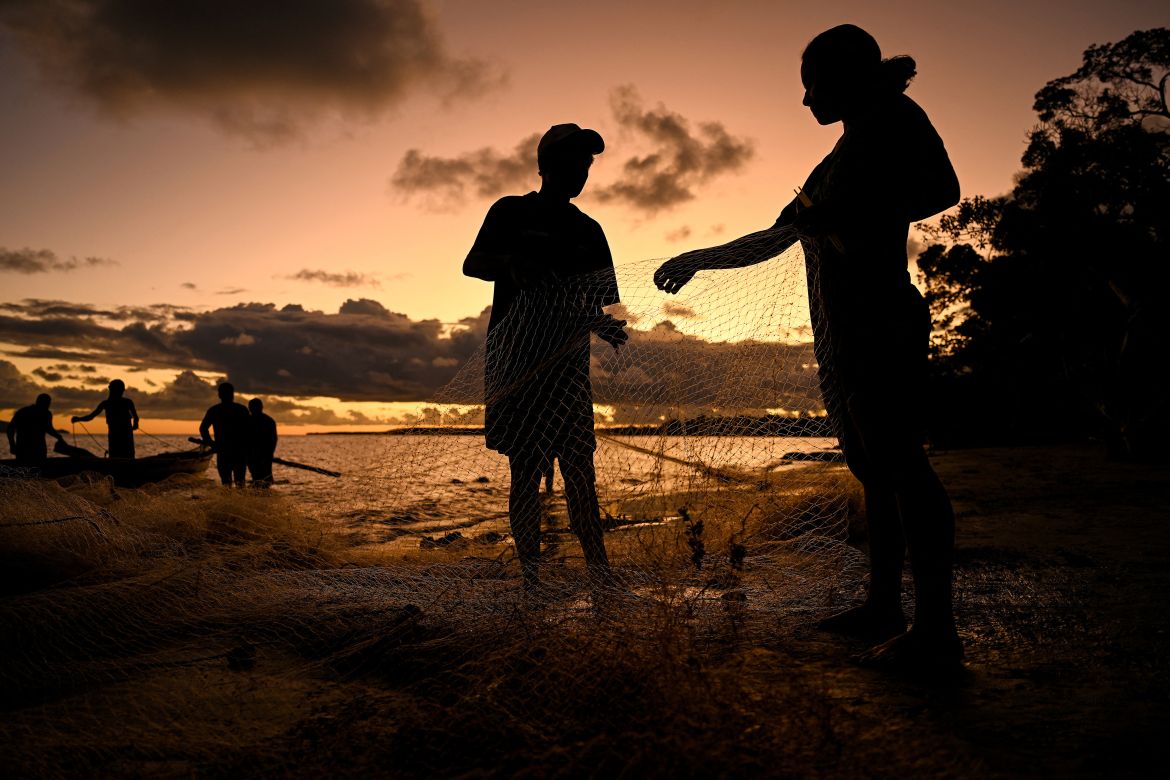In Pictures
Photos: Graves sink, fisheries shrink as climate change hits Fiji
The government estimates more than 600 communities could be forced to move, including 42 villages under urgent threat.
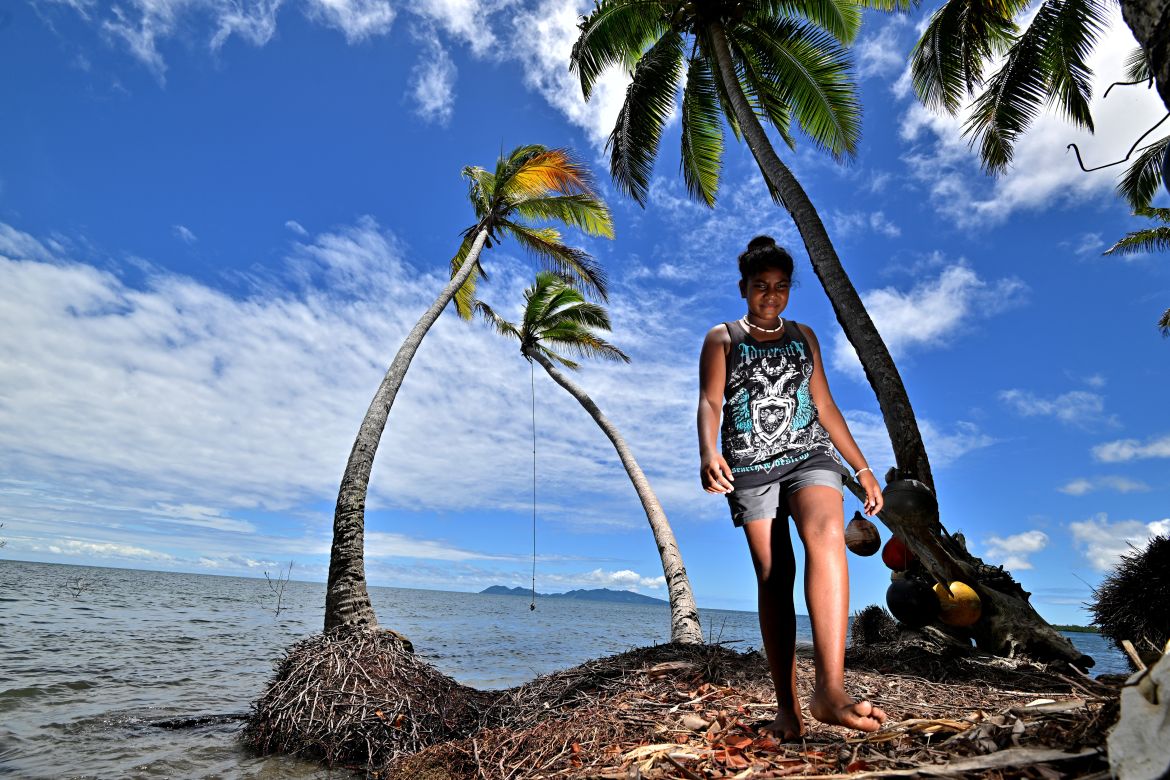
The sea has already swallowed the village graveyard in Togoru, Fiji, and longtime resident Lavenia McGoon is dreading the day it claims her house.
She piles old rubber car tyres under the coconut trees that line the beachfront, hoping this makeshift seawall will at least buy some time.
The 70-year-old believes climate change, and the creeping ocean, will inevitably force her family to leave.
“Nobody can stop it,” said McGoon, as the tide sweeps in and crabs scuttle over the headstones. “Nobody can stop water.”
Togoru is a small settlement on the south coast of Fiji’s largest island, Viti Levu. It is one of the dozens of coastal villages in the Pacific archipelago now confronting the reality of climate change.
Fiji has been meticulously preparing for the day it needs to relocate coastal villages. The scale of the challenge is enormous: The government estimates more than 600 communities could be forced to move, including 42 villages under urgent threat.
More than 70 percent of the country’s 900,000 people live within five kilometres (three miles) of the coast.
According to Australia’s Monash University, sea levels have been rising in the western Pacific Ocean two to three times faster than the global average.
Entire low-lying nations such as Kiribati and Tuvalu could become uninhabitable within the next 30 years.
About half of Fiji’s rural population relies on fishing for survival, according to the United Nations Food and Agriculture Organization. But the country’s fisheries are under pressure on multiple fronts.
Warmer seas are disrupting coastal ecosystems, while stocks of valuable species such as tuna have been plundered by foreign vessels.
